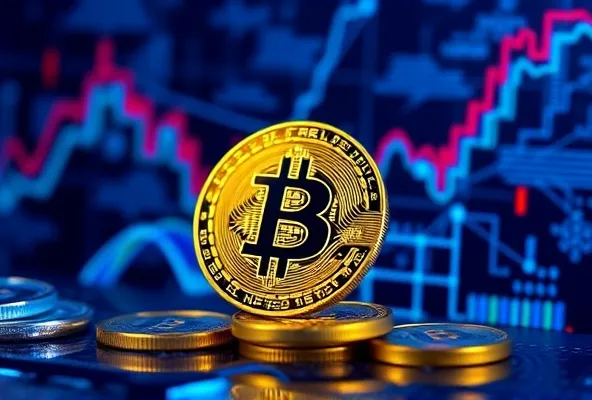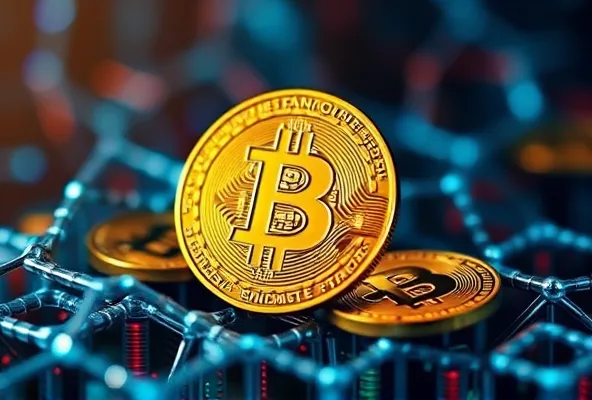A Glimpse into the Future of Finance
Imagine a world where your daily financial transactions don’t rely on traditional banks. Instead, everything—from purchasing coffee to securing loans—is powered by a decentralized, transparent, and digital system. This world is already taking shape. Sarah, a small business owner, once relied on banks to manage her finances. But over the past few years, she’s turned to digital assets, from Bitcoin to decentralized finance (DeFi) applications, finding faster transactions, fewer fees, and greater control. Sarah’s story illustrates a broader shift happening worldwide: as digital assets gain traction, they’re redefining how we think about money and finance.

 Interior
Interior Exterior
Exterior Engine
Engine


Digital assets like Bitcoin, Ethereum, and other cryptocurrencies are rapidly reshaping the landscape of finance, offering unprecedented opportunities and new pathways for financial freedom. In this article, we’ll explore why digital assets are positioned to become the future of finance and what this shift could mean for individuals and institutions alike.

Table of Contents
- The Rise of Digital Assets: A Financial Revolution
- Why Bitcoin Sparked the Digital Asset Movement
- Key Advantages of Digital Assets Over Traditional Finance
- Beyond Bitcoin: Other Transformative Digital Assets
- How Digital Assets Enable Financial Inclusion
- Decentralized Finance (DeFi): The Next Frontier
- Future Implications and Mainstream Adoption of Digital Assets
1. The Rise of Digital Assets: A Financial Revolution
Understanding Digital Assets
Digital assets refer to assets that exist in a digital form, ranging from cryptocurrencies like Bitcoin and Ethereum to tokenized assets, stablecoins, and more. They rely on blockchain technology, a secure, transparent digital ledger that allows for decentralized management and verification.
Why the Shift to Digital Finance?
Traditional finance systems, while functional, often involve high fees, slow transaction times, and limited access. Digital assets offer an alternative, enabling faster, cost-effective transactions and eliminating intermediaries, thus democratizing access to financial services.
Real-World Examples of Digital Finance
Countries like El Salvador, which adopted Bitcoin as legal tender, demonstrate how digital assets can reshape national economies. By embracing digital assets, governments, companies, and individuals are experiencing greater financial flexibility and autonomy.
2. Why Bitcoin Sparked the Digital Asset Movement
Bitcoin’s Foundational Role
Launched in 2009, Bitcoin was the first cryptocurrency, designed as a decentralized alternative to traditional currencies. It introduced blockchain technology to the world, providing a secure way to store and transfer value without banks.
The Appeal of Decentralization
Bitcoin’s decentralized nature, free from government or institutional control, appealed to those looking for financial sovereignty. It established the framework for a transparent, secure financial system that gave power back to individuals.
Scarcity and Value
With a limited supply of 21 million coins, Bitcoin introduced a scarcity model, positioning it as “digital gold.” Its fixed supply and transparency make it resistant to inflation, attracting those seeking an alternative store of value.
3. Key Advantages of Digital Assets Over Traditional Finance
Lower Fees and Faster Transactions
Traditional financial systems often involve various intermediaries, each adding costs and slowing transactions. Digital assets operate on decentralized networks, cutting out middlemen and enabling instant, low-cost transactions, especially across borders.
Transparency and Security
Blockchain technology ensures that every transaction is recorded on an immutable ledger, providing unparalleled transparency and reducing the risk of fraud. This technology is particularly valuable for sectors like supply chains, where transaction history is crucial.
Greater Financial Autonomy
Digital assets give individuals control over their wealth without relying on banks or financial institutions. This autonomy provides financial flexibility and freedom, especially for those in regions with unstable economies or restrictive banking systems.
4. Beyond Bitcoin: Other Transformative Digital Assets
Ethereum and Smart Contracts
Ethereum, launched in 2015, introduced smart contracts—self-executing contracts with the terms directly written into code. This innovation expanded blockchain’s potential beyond currency, enabling the creation of decentralized applications (dApps) that can operate independently.
Stablecoins for Stability
Stablecoins, such as USDT and USDC, are digital assets pegged to stable currencies like the US dollar. They provide a reliable medium of exchange within the crypto world, reducing volatility and facilitating practical transactions in daily life.
Tokenization of Assets
Tokenization involves converting physical assets, like real estate or stocks, into digital tokens on a blockchain. This process democratizes asset ownership, allowing people to buy, sell, or trade fractions of assets, opening new investment opportunities.

5. How Digital Assets Enable Financial Inclusion
Reaching the Unbanked and Underbanked
Over a billion people globally lack access to basic banking services. Digital assets bridge this gap by providing an alternative financial system accessible to anyone with internet access, empowering individuals in underserved communities.
Low-Cost, Cross-Border Transactions
Digital assets make cross-border transactions more affordable, bypassing high remittance fees and lengthy processing times associated with traditional banking. This benefit is crucial for people in developing regions who rely on remittances from family abroad.
Financial Freedom for Emerging Markets
In countries facing economic instability, digital assets offer a way to store value and safeguard wealth outside of the local currency. This benefit allows people in volatile economies to achieve greater financial resilience.
6. Decentralized Finance (DeFi): The Next Frontier
What is DeFi?
Decentralized Finance, or DeFi, encompasses financial applications built on blockchain, removing intermediaries like banks. DeFi applications allow for activities like lending, borrowing, and earning interest without needing a bank or brokerage.
Lending and Borrowing with DeFi
Platforms like Aave and Compound let users lend their digital assets to others in exchange for interest or borrow assets by providing collateral. This system democratizes access to loans and savings options.
Earning Passive Income with DeFi
Through yield farming and staking, users can earn passive income by contributing their assets to DeFi platforms. This innovation has opened new ways for individuals to grow wealth through their digital holdings.
Challenges Facing DeFi
While promising, DeFi is still in its infancy and faces risks such as smart contract vulnerabilities, regulatory challenges, and liquidity issues. Users should approach DeFi platforms with caution and conduct thorough research.
7. Future Implications and Mainstream Adoption of Digital Assets
Corporate Adoption and Investment
Companies like Tesla, Square, and PayPal are adopting digital assets, investing in Bitcoin or offering cryptocurrency payment options. This trend highlights the growing legitimacy and mainstream acceptance of digital assets.
Central Bank Digital Currencies (CBDCs)
Central banks worldwide are exploring CBDCs, digital versions of national currencies, on blockchain technology. CBDCs represent a hybrid of traditional currency and digital assets, suggesting a future where digital finance plays a central role in global economies.
Predictions for Digital Assets in Finance
Analysts predict that digital assets will become more integrated into everyday financial activities, from payments to savings to investments. As digital finance infrastructure develops, more individuals and institutions will likely adopt and rely on digital assets.

FAQ
Q1: Are digital assets safe to use?
Digital assets are secure when managed properly, but they come with risks. Using reputable exchanges, securing wallets, and practicing safe digital habits can mitigate risks, though volatility remains inherent in digital assets.
Q2: How can digital assets replace traditional finance?
Digital assets streamline transactions, reduce fees, and provide financial access to those without banks. While they may not entirely replace traditional finance, they’re expected to integrate with or complement it.
Q3: What are the biggest challenges facing digital assets?
Regulatory uncertainty, volatility, and security risks are major challenges. However, as regulations develop and technology advances, these challenges are expected to become more manageable.
Q4: Are all digital assets the same?
No, digital assets vary significantly. Bitcoin is primarily a store of value, while Ethereum enables smart contracts and DeFi applications. Stablecoins, NFTs, and CBDCs each serve unique purposes within the digital finance ecosystem.
Q5: How do I start investing in digital assets?
Choose a reputable exchange, purchase small amounts to start, and use a secure wallet for storage. Researching different types of digital assets can help you build a diversified digital portfolio.
Conclusion: Embracing a Digital Financial Future
As digital assets like Bitcoin, Ethereum, and DeFi applications become increasingly integrated into finance, they represent a transformative shift toward a more accessible, decentralized, and efficient financial system. While challenges remain, the momentum behind digital assets signals a future where finance is more inclusive, adaptable, and innovative. Embracing digital assets doesn’t just mean adopting a new type of currency—it’s a step towards a financial future where control and opportunities are more evenly distributed, empowering individuals and reshaping the foundations of global finance.










